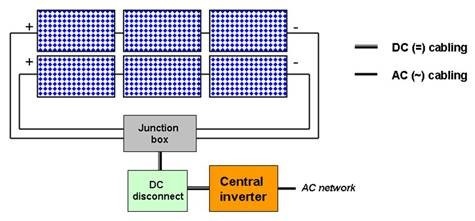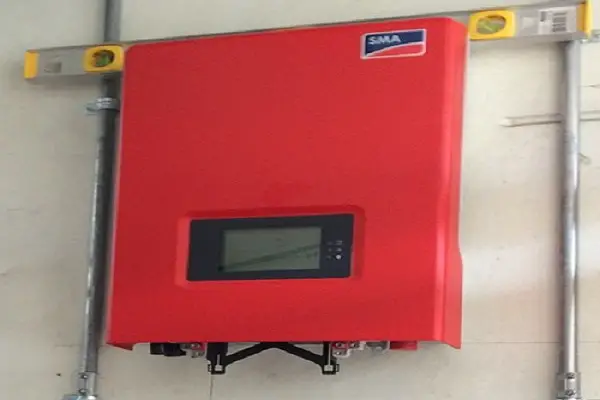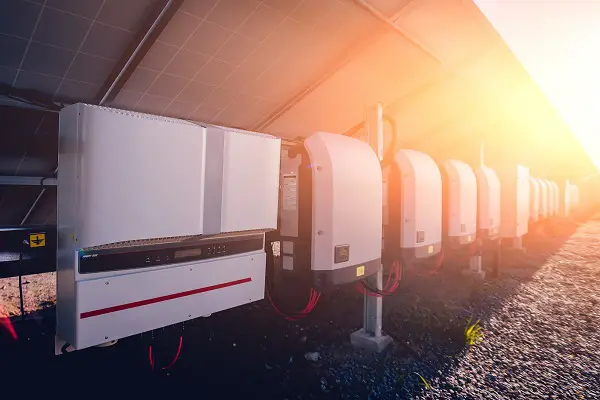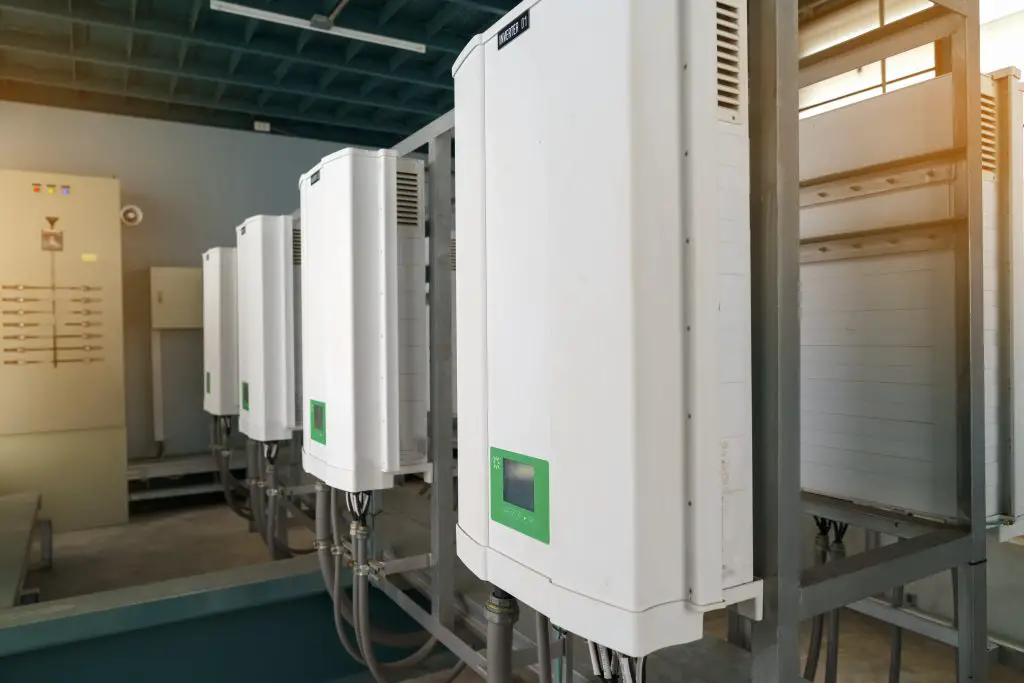What Are Solar Power Inverters And Why Do You Need One?
In present times, the world’s need for resources is leaning towards green energy. Green energy, as we know it, comprises the solar system and it is the go-to source of cost-effective and eco-friendly energy.
There is a lot to know about solar energy, from the size of the panel to installation, and positioning of the panel.
So, if you are thinking about getting a solar inverter today, this article will run you through the nitty-gritty of the process – starting from what an inverter is, the short history, and the long-term benefits of your investment.
Enjoy the ride!
Solar inverter – the evolution
Basically, the history of solar inverters dates back to the period around the 18th century. Following the creation of the ‘number one’ Solar Collector by Horace-Benedict de Saussure, a Swiss scientist, the world was shaken by the revolutionary piece.
The collector consisted of a solar oven made of three layers of glass. To harness the power of the sun, the solar oven would have to attain a temperature of 1100C. In 1839, the technology had transitioned to the next milestone.
This happened when Edmond Becquerel, a French Scientist, unveiled the photovoltaic effect. How? He exposed a conducting solution to light after placing the electrode in the solution.
On exposure to sunlight, the electrode gave off some electrical currents. Other attempts to modify the solar inverter’s total makeup include:
- Creation of a solar cell by Melvin Severy in 1894
- Creation of Selenium-based models by Charles Fritts’ in 1883
- Creation of working solar cells by Aleksandr Stoletov in 1888
In 1953, the solar inverter game had changed completely. To move the creation past the invention phase, the first silicon solar cells where created by Bell Laboratories.
The introduction of grid contracts and solar cells (of 10% efficiency) followed in 1959 by Hoffman Electronics.
Throughout the industry in the early ‘60s and ‘70s, the government pumped in more funds to facilitate the growth and development of the prototypes since the industry could not afford its commercialization.(1)
The worldwide production of photovoltaic cells was about 1.3 megawatts in 1983. But by 1999, the production had hit 1,000 megawatts in 1999 because of the development of photovoltaic to facilitate the achievement of better technology at reduced costs.
MIT researchers, by 2016, had started creating flexible and super-thin solar cells (1.3 microns) while the generation increased to about 2,720 watts for every pound.(2)
Presently, solar panels can deliver an efficiency of about 22%. If your household were of high-quality systems, you will be generating 86% of the initial output even after two decades.
By calculation, it means you are only losing 0.5% efficiency annually. In the nearest future, scientists hope that that the newly formulated ‘perovskite’ solar cells will be exciting enough to toss silicon types of the market – which will reduce the cost of production.
Latest solar technologies
Now, solar technology is making waves in every sector but some people are baffled about the method of use.
In present times, solar technology has created solar window sockets that can power up mobile phones. Also, you can charge your phone in a place, in the office, the café, and an open place.
For home use, solar technology is crossing boundaries to set up solar-powered laptops and portable solar cookers – in case you wish to shift your dependence from gas cookers and skillets.
If you are a professional photographer, you may find a good use for the solar camera strap to power up your camera or to power up your devices by using a solar power purse or solar backpack – both devices generate power as you go.
How solar energy works
Generally, solar energy follows a simple but complex mechanism. Once the setup receives energy from the sun, it converts it directly to electricity. The component of the system is the solar inverter and solar panels.
What are solar inverters?
Simply put, a solar inverter is a device that converts direct current (DC) to alternate current (AC).(3)
As components of the solar electric system, they very important in converting direct current electricity that is generated by solar panels. Additionally, many devices in the homes are dependent upon AV voltage for operation.
Therefore, you need a solar inverter in the whole package. There are two options of inverters in a solar system and it depends on the size of your photovoltaic:
- Single inverter
- Multiple inverters
Solar systems are of two types which are grid-connected (grid-tied) and grid-disconnected (off-grid). Even though the main function of the inverter remains the same (conversion of direct current into alternating current), the different solar system types require differing inverters.
Grid-tied solar panel systems – battery backup
The heart of a grid-tied solar system is the inverter because inverters are inevitable for the system. In the grid-tied type, the conversion of DC voltage to AC voltage occurs so that it may be sent to the utility grid for immediate use.
A rule of thumb says that grid-tied inverters that lack battery backup are both straightforward and efficient for installation.
Without turning on the utility, grid-tied inverters will not work. By inference, grid-tied inverters go off as soon as the utility is down.
Most of the types of inverters are based on MPPT (Maximum Power Point Tracking) – this is the feature that squeezes the maximum amount of power from the photovoltaic array.
The inverter connects to the utility grid through the electrical system of the building or by other direct means. Indirect connections, the AC electricity which is generated moves into the utility grid.
If the connection is done through the grid of the building, your appliances will consume the AC power that comes from the PV system; what is left is sent to the grid.
Besides the grid-type inverter must be in compliance with the regulations and requirements of the utility grid. For instance, the form of AC voltage from the grid-tied inverters must be sinusoidal.
However, you must know that grid-tied inverters are prone to grid failure once it stops operating. Thus, the repair technicians that work on such a utility grid are less prone to shocks from electricity.
You will find solar inverters in two forms:
- Physically integrated forms in the solar panels
- Individual blocks located outside the solar array
And if you are scared about your grid-tied inverter suffering a breakdown when there is grid outage, you must know that there won’t be electricity during these hours.
This mechanism is an ‘anti-islanding protection’ module.
Again, there are two classes of grid-tied systems of this type:
-
String inverters
The solar array in small home PV systems all originate from the central inverter. Therefore, you may call them ‘central inverters’.
The reason is that the string inverter regards a single solar panel as the solar array. With string inverters, you can save more money on purchase and installation.
Drawback – String inverters are known to be plagued with a major disadvantage.
The solar array is at risk of deterioration when the solar panel deteriorates or is shaded – resulting in the reduction of the DC input power of the inverter. Invariably, this brings about a reduction in the AC output power of the inverter.
In order to receive greater power or voltage, you may link up multiple inverters – this approach is also known as ‘inverter stacking’. When you stack inverters, you are adding several solar panels or steadily increasing the AC wattage that the inverter handles.
As long as both inverters are compatible, you may wire in series for a greater output voltage or wire in parallel to increase the output power.

String Inverter
-
Solar microinverters
By definition, the solar micro inverters are inverters with about 250W of output power.13 I bet it’s the reason they are also called module inverters.
As an integral part of the PV module, it works in connection with its solar panel and operates as a central inverter. Also, each panel of the solar array is fitted with the microinverters.
Therefore, there is a high tendency for the overall system cost and installation cost to be high. Fortunately, microinverters are better replacements for the string inverter as it trumps its drawbacks.
Regardless of shading or degradation in performance, the performance of other panels remains intact within the solar array.
This is expected the microinverters use MPPT (Maximum Power Point Tracking) for strict monitoring of the single solar panel’s performance while ensuring that the panel dispenses maximum power.
More so, the structure of the microinverter comes in handy during the solar panel failure, ensuring that the point of failure is localized. On average, a solar system generates about 16% more solar power than the string types, with the condition that it is based on micro inverters.
Microinverters have an efficiency of about 96.5%, making it 4.5% higher than that of the string inverters. Statistically, connecting the microinverter to a string inverter will result in a 54% reduction in the power output, if it satisfies the condition that it shades of 9% of the solar array.

Benefits of microinverters over string inverters
- Safe installation and maintenance practices. By avoiding wiring several panels in series, there is a lesser need for high voltage DC wiring.
- PV modules can be mounted towards different directions since they are placed on different surfaces.
- Lower dissipation of heat which in turn doesn’t command the need for a cooling device. Put simply, the inverter is silent in operation.
- In a case where you wish to expand your solar panel system, you can and with ease. There is no need to be furious about the purchase, installation, and redesigning of a second central inverter.
- Microinverters are notorious for better durability than their contemporaries. The reason? They are minimally exposed to heat and high power, unlike string inverters.
From these benefits, it is obvious that micro-inverters are of greater warranty. For instance, a typical string inverter comes with a warranty of 10 years while the microinverters boast of double the number.
Drawbacks – Micro inverters are of lower heat resistance and higher cost. In case you want a large solar power system, microinverters may be a suitable choice because:
- It doesn’t require DC cabling
- The rest of the PV array is neither affected by inverter failure nor shading of a module
- The voltages are considerably less dangerous at 120 VAC.
Characteristics of Inverters
So far, we have discussed some types of solar inverters and the physics behind them. But the characteristics of inverters will serve as a proper guide when you have to purchase one.
No one wants to buy a lackluster solar inverter at a ridiculous price and have great cause to purchase another one within a short space of time.
Application environment
This point highlights the region or specific location where you want the inverter installed. And the answer will depend on its end use. Options for installation include a recreational vehicle, home, emergency backup, or portable device.
Efficiency
Just like friction, you lose some energy during the conversion of power. According to physics, efficiency refers to the ratio of outgoing power (power out) to incoming power (power in) in percentage.
Where efficiency is 90%, the inverter consumes about 10% and the power is lost as heat. Basically, the inverter’s efficiency varies largely with the load. When the capacity of the inverter is at two-thirds, it is highest – which is known as ‘peak efficiency.
The inverter will require some power for self-running. In that case, a large inverter has a lower efficiency when it runs small loads.
There are many days in your home when you experience a low electrical load. Under such conditions, the efficiency of the inverter may be lower or equal to 50%.
Therefore, never make the mistake of assuming that the peak efficiency of the inverter of 93% surpasses another with a peak efficiency of 85%.
As explained, the ‘seemingly lower’ option may have greater efficiency when the power levels are low.
Battery charging
Due to a built-in battery charger in some inverters, the battery bank is recharged on applying power from the utility grid or AC generator when batteries are not sufficiently charged.
This function is of great essence to renewable energy systems because there will be days when there is an insufficient supply of energy. This makes for the complete switch of inverters into emergency backups by adding spare batteries.
Some specifications that pinpoint the function of battery chargers are:
- Voltage requirements and generator size
- Maximum charging rate (amps)
- Features of charge control – which includes temperature compensation, accommodation of both sealed and flooded battery types, and more refinements.
Conclusion
The quality of the solar inverter is non-negotiable; you must get returns on investment. With a good and reliable inverter, you can handle several quantities of load without a decline in energy.
Also, such an inverter is shielded from static and lightning with surges that bend to overload conditions.
The qualities of a good inverter are simply stated in three statements – proven and tested, certified, and long-lasting. If you buy a cheap inverter, you may find it in a pile of junk (if it doesn’t burst into flames first).
The first consideration to be made of your inverter is that it is a foundation component. Purchase a good one today and be rest assured that the following years are covered.
P.S. If you find this post useful and interesting, please do not hesitate to share it.
If you have something to add- Leave a comment below!



